Mangosteen Profile
Written by Joy
Nov 06 2020
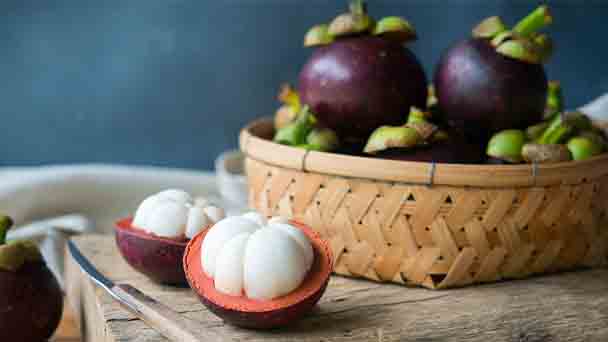
Mangosteen is a small tree, 12-20 meters high, with many and dense branches, alternately opposite, and the branchlets have obvious longitudinal ribs. The leaves are thick, leathery, shiny, elliptical, or oblong, with a short tip and acuminate, and a broad wedge or nearly round base. Male flowers 2-9 clusters with short pedicels; female flowers are solitary or in pairs, inserted at the top of branches, slightly larger than male flowers; ovary 5-8 locules, few styles, stigma 5-6 deeply parted. The fruit is purple-red when mature, with yellowish-brown patches between, smooth, with seeds 4-5, aril-like juicy, white. The flowering period of mangosteen is from September to October, and the fruit period is from November to December.
Mangosteen morphological characteristics
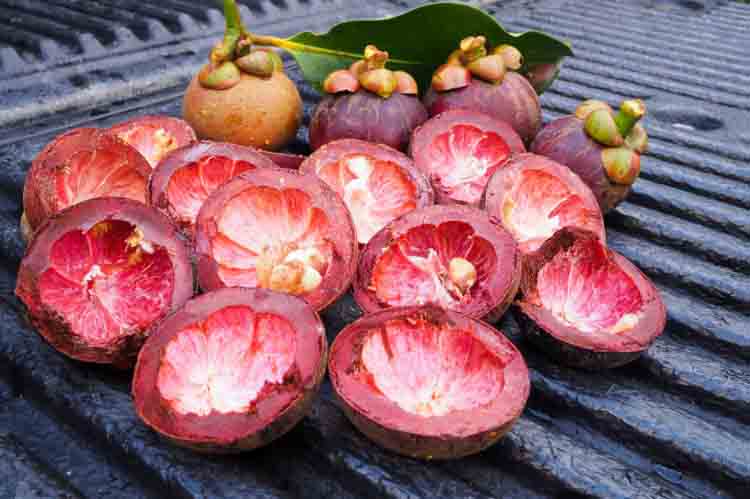
The male flowers of mangosteen have 2-9 clusters of branch apex, short pedicel, and 4 bunches of stamens merged into 4 bunches. The female flowers are solitary or in pairs, inserted at the branch apex, slightly larger than the male flower, 4.5-5 cm in diameter and long pedicel. 1.2 cm; ovary 58 rooms, few without style, stigma deeply parted.
The fruit is purple-red when mature, with yellowish-brown patches between, smooth, with seeds 4-5, aril-like juicy, white. The flowering period of mangosteen is from September to October, and the fruit period is from November to December.
Mangosteen growth habit and growing environment and distribution
Mangosteen has wide adaptability to the soil. Compared with clay, mangosteen prefers sandy soil with rich organic matter and a pH value of 5-6.5.The requirements for drainage conditions are good. When the mangosteen grows rapidly, the water demand is greater. The annual rainfall in tropical areas can meet its vigorous growth at 1300-2500mm; the uniformity of rainfall distribution during the year will also affect the growth rate of mangosteen. Evenly distributed rainfall is more conducive to the rapid growth of mangosteen.
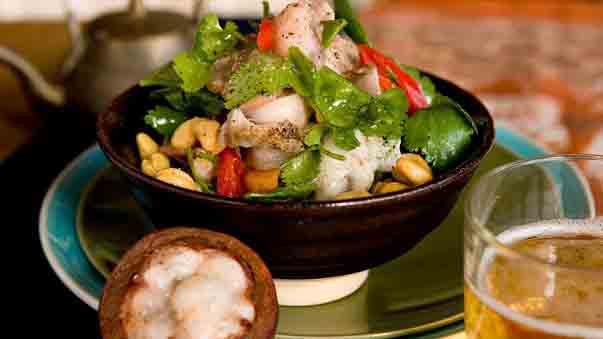
The early growth of mangosteen requires a low light environment, and the shading degree of 40%-75% is most suitable for the growth of mangosteen. Under direct sunlight, the leaves of mangosteen, especially the newly extracted leaves, are easily burned by strong light.
Mangosteen has a life span of up to 70 years, but it grows slowly. It takes seven to eight years from cultivation to fruiting. The fruit ripening period is from October to December, and the yield is higher from November to December.
Mangosteen is native to Maluku and is widely cultivated in tropical regions of Asia and Africa; it is also introduced or tested in Taiwan, Fujian, Guangdong and Yunnan of China.
Mangosteen efficacy and role
Mangosteen can be eaten raw or candied. Mangosteen can be eaten raw, squeezed juice, made salad, canned, etc. The mangosteen peel is bitter and astringent. When peeling, it is necessary to prevent the peel juice from staining the flesh to avoid affecting the taste.nutrition
Nutrients The pulp of mangosteen persimmon is rich in dietary fiber, carbohydrates, vitamins and mineral elements such as magnesium, calcium, phosphorus and potassium. It has a good nourishing effect on the body, and has a good nourishing effect on the frail, after illness, and malnutrition.
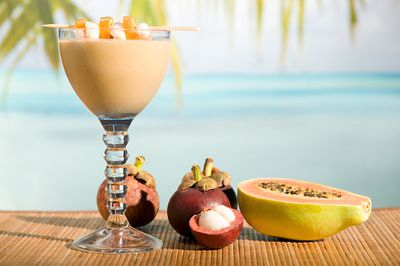
Applicable to the general population can eat. People who are weak and sick are more suitable.
Contraindications
Obesity and kidney disease, heart disease patients eat less; diabetic patients do not eat. People with weak constitutions can only eat less, not more.
Eat up to 3 mangosteens a day, too much can cause constipation. If you overeat it by accident, you can reconcile it with ginger tea in brown sugar.
Mangosteen can be eaten with cold foods such as watermelon, soy milk, beer, cabbage, mustard greens, bitter gourd, wax gourd, lotus leaf and so on.
When eating mangosteen, it is best not to dye the purple sap on the flesh, which will affect the taste.
Do not eat during women's menstruation or those with cold dysmenorrhea.
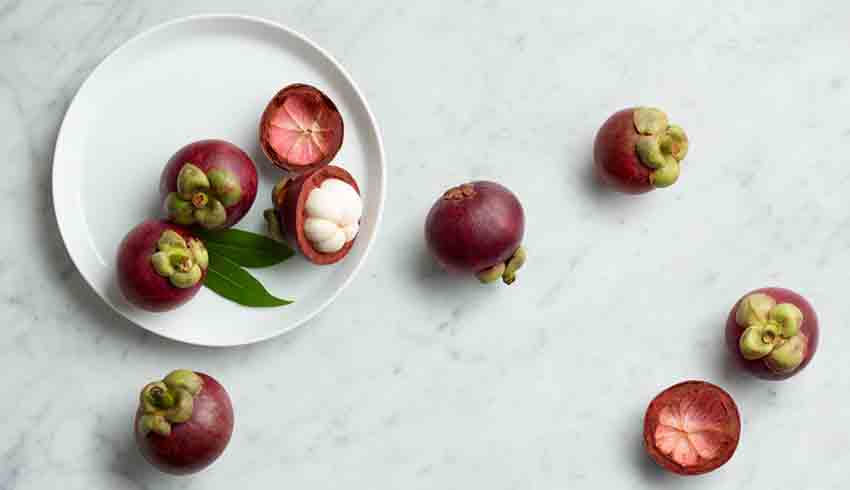
Mangosteen cultivation
The seeds of mangosteen are parthenosexual and asexual. The main methods are cutting method, grafting method, layering method, ramification method. It can be transplanted in spring, summer, autumn and winter.Cuttings
Cut flowers, stems, and leaves and insert them into the seedbed to make them grow into a complete plant. This method is called cutting. The material used for cuttings is called cuttings.Grafting
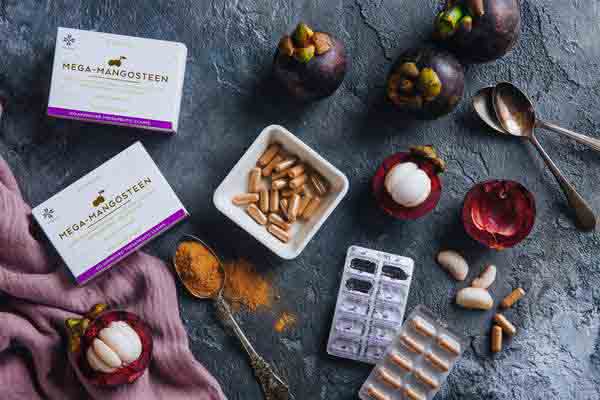
Layering
The method of using the branches of the mother plant to press into the soil and adopt a certain method to root them to obtain new plants is called layering. For example, the stems of Begonia, Oleander, and the mother plant have many and long branches, and they will take root when pressed into the soil. Therefore, bedding is used for propagation. The layering method is easy to operate, does not require special management after pressing, and has a high survival rate. Therefore, it is a commonly used breeding method for woody flowers.Ramets
Ram propagation is a method of dividing the tillers, bulbs, rhizomes, and stolons of flower plants from the mother plant and planting them separately to form new independent plants. The ramification method is divided into two kinds: the full division method and half division method.Latest Updated
- Benefits of Bugleweed - 7 Science-backed Health Benefits
- Bugleweed Dangers & Side Effects - Is It Poisonous?
- How to Plant Evergreen Trees - What You Should Know
- When to Plant Evergreens - Grow Guide for Evergreen Trees
- 12 Wonderful Evergreen Shrubs for Your Garden
- 12 Popular Evergreen Plants with Pictures for Beginners
- When And How To Prune A Lilac Bush Like a Pro
- How to Grow & Care for Lilac Vine (Hardenbergia Violacea)
- Japanese Lilac Tree (Syringa Reticulata) Care & Propagation Guide
- Shumard Oak Pros and Cons - What to Know
Popular Articles
- Winter maintenance of Antirrhinum Majus
- How to Grow Terminalia Mantaly Tree
- How to Grow and Care for Crossostephium Chinense
- How to grow Antirrhinum Majus in spring
- Peristeria Elata (Dove Orchid) Profile: Info & Care Guide
- Underwatered Snake Plant (Sansevieria Trifasciata) - Signs And How To Fix
- How to Care for Brazilian Jasmine Plant (Mandevilla Sanderi)
- How to Grow & Care for Graptopetalum Purple Delight in Summer
- Rosa Chinensis (China Rose): Plant Growing & Care Tips
- How to Care for Baby Sun Rose (Aptenia Cordifolia)